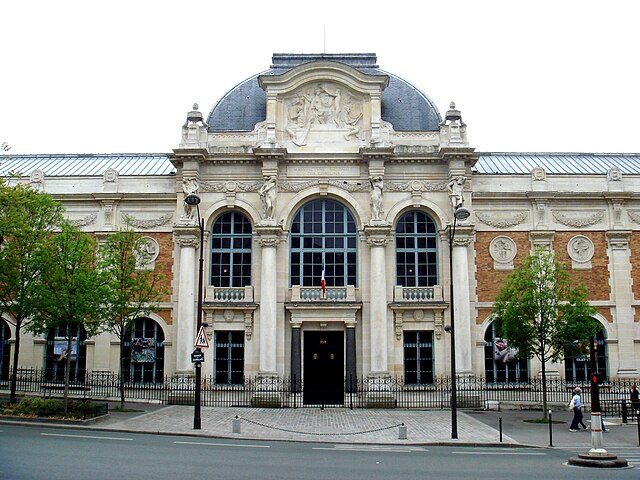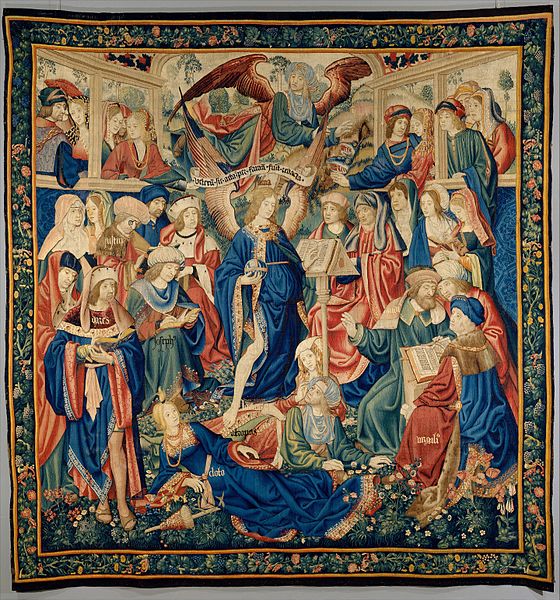The Gobelins Manufactory is a historic tapestry factory in Paris, France. It is located at 42 avenue des Gobelins, near Les Gobelins métro station in the 13th arrondissement of Paris. It was originally established on the site as a medieval dyeing business by the family Gobelin.
The Gobelins Manufactory in 2009
Battle of Zama tapestry after Jules Romain, manufactured for Louis XIV in 1688–1690 (Louvre Museum)
Rear view in 1830 of the Gobelins Manufactory, adjoining the river Bièvre
Death of Constantine tapestry (one in a series) after a design by Rubens woven by Filippe Maëcht and Hans Taye in the Comans-La Planche workshop, 1623–1625.
Tapestry is a form of textile art, traditionally woven by hand on a loom. Normally it is used to create images rather than patterns. Tapestry is relatively fragile, and difficult to make, so most historical pieces are intended to hang vertically on a wall, or sometimes horizontally over a piece of furniture such as a table or bed. Some periods made smaller pieces, often long and narrow and used as borders for other textiles. Most weavers use a natural warp thread, such as wool, linen, or cotton. The weft threads are usually wool or cotton but may include silk, gold, silver, or other alternatives.
Weaving a small tapestry on a high-warp loom, 2022, New Zealand
One of the tapestries in the series The Hunt of the Unicorn: The Unicorn is Found, circa 1495–1505, The Cloisters, Metropolitan Museum of Art, New York City
Tapestry Room from Croome Court, moved to the Metropolitan Museum of Art, hung with made to measure 18th-century Gobelins tapestries, also covering the chairs. 1763-71
The Triumph of Fame, probably Brussels, 1500s








